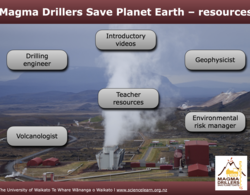

New Zealand is a nation of potato lovers. We love our spuds, and for many of us, they are a key source of vitamins, minerals and phytochemicals. We’re also very efficient potato growers – growing ...
READ MORE

In a world seeking natural remedies and alternatives to our failing antibiotic treatments, mānuka honey and therapeutic products are proving a market winner. Mānuka honey is often referred to as ...
READ MORE

Position: Professor in Ethnobotany, Massey University. Field: Agronomist working on crop production systems and improving yield quality – primarily with traditional foods such as taewa (Māori ...
READ MORE

In this activity, students measure the pH of soil collected from a paddock. This will be used to estimate the amount of agricultural lime needed to promote good grass growth. By the end of this ...
READ MORE

Students use a three-level reading guide strategy to locate, interpret and apply the information to consider the role of research in finding easy care sheep traits. Purpose Students engage with ...
READ MORE

Pasture is an area of land that’s covered in a range of low-growing forage species. Grasses, legumes and herbs are common pasture plants, with farmers selecting particular cultivars to suit ...
READ MORE

Earthworms are useful indicators of soil health. This project aims to capture information on earthworm abundance and species distribution throughout New Zealand. Information provided will be used ...
READ MORE

By comparing some features of fossilised plants with the same features of plants living today, scientists hope to be able to learn more about the effect of changing carbon dioxide (CO2) levels in ...
READ MORE

iNaturalist logs hundreds of thousands of photos of flora, fauna and fungi. There are even sound recordings too. Each is described and geo located. iNaturalist is used by citizens and scientists ...
READ MORE

Games have long been used for developing both skills and knowledge in the education sector. As digital technologies continue to develop, the range of digital learning games also continues to ...
READ MORE

Students investigate silage production and test a stream to see if run-off from silage is polluting it. Students then produce a pamphlet of their findings to educate the community. Purpose To ...
READ MORE

Students use information about an Automated Milking System (AMS) to design the layout of their own farm. Two-dimensional drawings are processed to make three-dimensional models of the layout ...
READ MORE
New Zealanders are a nation of potato lovers. We also have a thriving export market for our potatoes. Unfortunately, the tomato/potato psyllid pest is costing our commercial potato industry ...
READ MORE
Tāhuri Whenua supports Māori growing taewa and other traditional Māori crops such as kūmara and kānga. Regular hui bring the growers together to share information and resources. This is helping ...
READ MORE
The mānuka honey industry depends on wild harvesting of honey – this is where hives are set up in areas that naturally have a large number of mānuka trees. Methylglyoxal (MGO) is formed from the ...
READ MORE

New Zealand dairy farming is pastured-based. Discover a few of the commonly used plant species.
READ MORE

An interactive showing the main components of the terrestrial nitrogen cycle. Select one of the buttons to find out more. Go here to view the full transcript and copyright information.
READ MORE

This interactive introduces and houses resources developed by Magma Drillers Save Planet Earth – a University of Canterbury project funded by Curious Minds. Select here to view the full ...
READ MORE